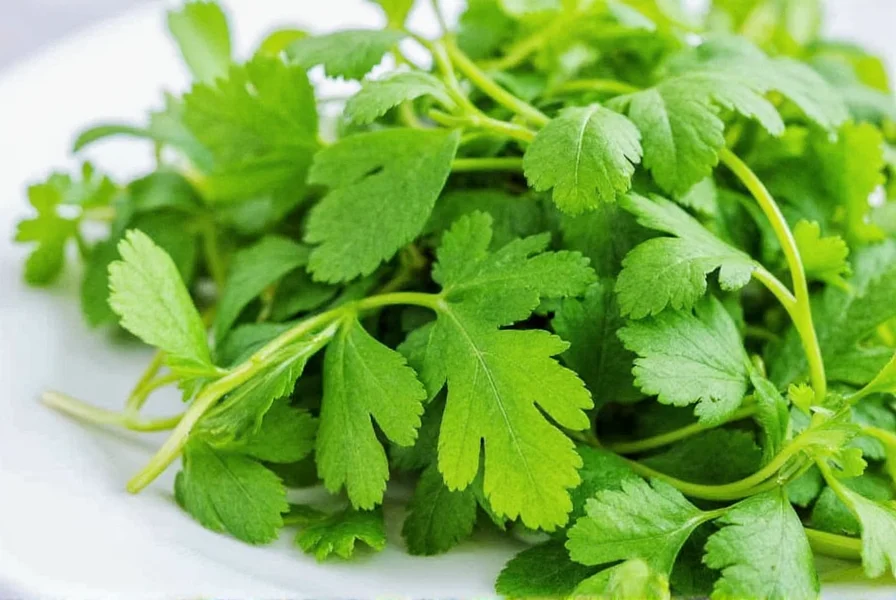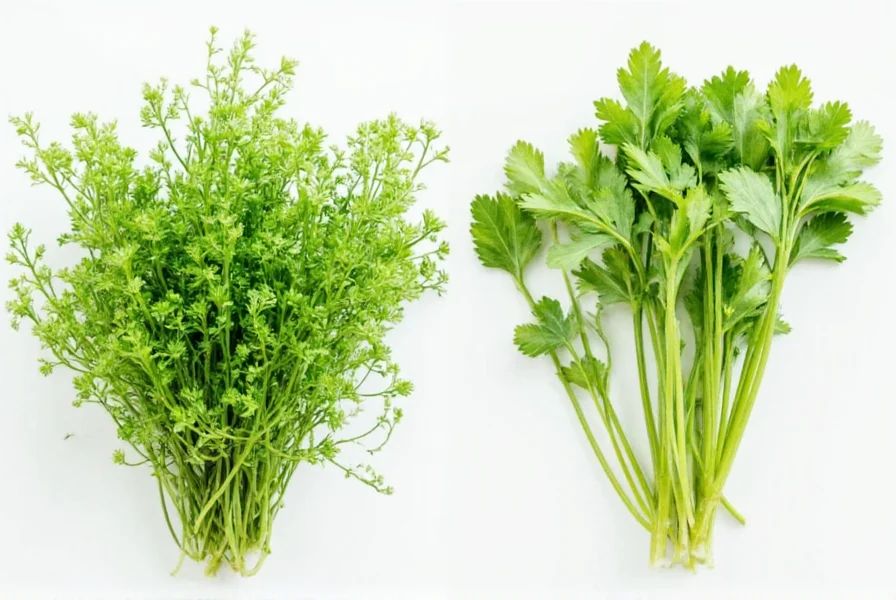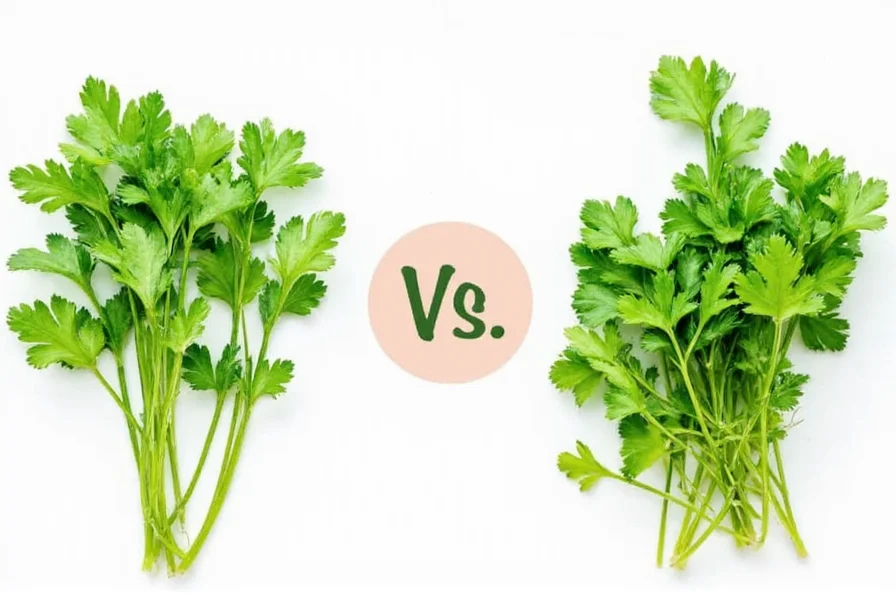If you've ever stood in a grocery store puzzled by recipes calling for "coriander" while the label says "cilantro," you're not alone. This common culinary confusion stems from regional language differences rather than botanical distinctions. Understanding is coriander cilantro the same plant unlocks better cooking experiences and prevents recipe mishaps.
The Botanical Reality: One Plant, Two Names
Scientifically known as Coriandrum sativum, this annual herb belongs to the Apiaceae family, which includes parsley, carrots, and celery. The entire plant is edible, but different regions developed distinct terms for its various parts:
| Plant Part | American Terminology | British/Commonwealth Terminology |
|---|---|---|
| Fresh leaves and stems | Cilantro | Coriander (fresh) |
| Dried seeds | Coriander seeds | Coriander (seeds) |
| Roots | Rarely used | Coriander root (common in Thai cuisine) |
The linguistic split originated from Spanish influence in the Americas. "Cilantro" derives from the Spanish word for the fresh leaves, while English-speaking countries retained the Latin-based "coriander" for both forms, specifying "fresh" or "seeds" as needed.

Historical Context of the Naming Divide
The term "coriander" entered English from the Greek koriannon, which may relate to the plant's resemblance to bedbugs (Greek koriandron). Spanish explorers adopted a variation as "cilantro," which became standard in the New World. When British colonists encountered the plant in India (where it's been cultivated for 5,000 years), they used the familiar "coriander" term for both fresh and dried forms.
This historical divergence explains why is coriander the same as cilantro confuses so many home cooks. The same plant arrived in different regions through different cultural pathways, acquiring distinct names along the way.
Culinary Implications You Should Know
Understanding the difference between coriander and cilantro matters significantly in cooking:
- Flavor profiles differ dramatically: Fresh cilantro has a bright, citrusy flavor with soapy notes (for some genetic profiles), while coriander seeds offer warm, nutty, lemony notes when ground
- Substitution pitfalls: Dried coriander seeds cannot replace fresh cilantro in salsas, and fresh cilantro doesn't work as a substitute for ground coriander in spice blends
- Recipe interpretation: British recipes calling for "coriander" likely mean the fresh herb, while American recipes specifying "coriander" almost always refer to the seeds
Professional chefs navigate this by specifying "fresh coriander" or "coriander seeds" in international kitchens. When adapting recipes, always consider the dish's origin—Mexican recipes mean cilantro when they say "coriander," while Indian recipes mean the seeds.

Common Misconceptions Clarified
Several myths persist about coriander vs cilantro leaves:
Myth: They're different plants
Fact: Same plant—just different naming conventions for the same herb
Myth: Cilantro is just young coriander
Fact: The plant produces both leaves and seeds simultaneously; leaves don't "become" seeds
Myth: The seeds taste like the leaves
Fact: They have completely different flavor compounds—linalool dominates in seeds while decenal defines fresh leaves
Practical Guidance for Home Cooks
When encountering are coriander seeds and cilantro the same confusion in recipes:
- Check the recipe's country of origin: American = cilantro (leaves), coriander (seeds); British = coriander typically means fresh leaves
- Consider the dish type: Salsas, guacamole, and Thai salads need fresh leaves; curries and baked goods usually require seeds
- When in doubt, look at texture requirements: "Chopped" indicates fresh leaves; "ground" means seeds
For the best results, grow your own Coriandrum sativum—you'll have both "cilantro" and "coriander" available simultaneously, eliminating confusion while ensuring peak freshness.
Frequently Asked Questions
Is coriander the same plant as cilantro?
Yes, coriander and cilantro come from the exact same plant (Coriandrum sativum). The difference lies in regional terminology: "cilantro" refers to the fresh leaves and stems in American English, while "coriander" typically describes the dried seeds. In British English, "coriander" refers to both the fresh herb and its seeds, with context determining which part is meant.
Can I substitute coriander seeds for fresh cilantro?
No, coriander seeds cannot substitute for fresh cilantro. They have completely different flavor profiles and textures. Coriander seeds offer warm, citrusy notes when ground, while fresh cilantro provides bright, grassy flavors. In emergencies, you might use a tiny pinch of ground coriander (1/8 teaspoon) to mimic cilantro's citrus notes in cooked dishes, but this won't work for raw applications like salsas.
Why do some people think coriander and cilantro taste like soap?
Approximately 21% of people possess a genetic variation (OR6A2 gene) that makes them perceive certain aldehydes in cilantro as soapy. This genetic trait affects cilantro more than coriander seeds because the fresh leaves contain higher concentrations of these compounds. The soapy perception typically doesn't affect ground coriander seeds, which is why many who dislike fresh cilantro still enjoy dishes with coriander spice.
What's the difference between fresh coriander and dried cilantro?
Fresh coriander (called cilantro in America) loses its distinctive flavor when dried. Drying transforms the chemical compounds, resulting in a completely different product that doesn't resemble fresh cilantro. True dried cilantro isn't commercially available because it becomes bitter and loses its characteristic flavor. When recipes call for dried cilantro, they almost always mean ground coriander seeds instead.











 浙公网安备
33010002000092号
浙公网安备
33010002000092号 浙B2-20120091-4
浙B2-20120091-4